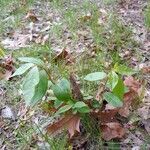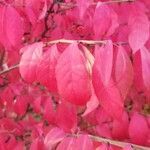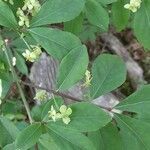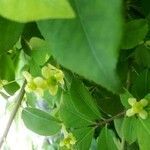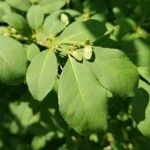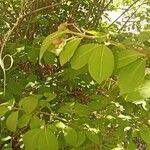Shrubs 1–4(–7) m. Stems erect; young branches 4-angled, becoming corky winged. Leaves deciduous; petiole 0.5–4 mm; blade narrowly elliptic, 2.5–6 × 0.5–2.5 cm, base attenuate or cuneate, margins denticulate, apex acuminate. Inflorescences axillary, (1–)3(–7)-flowered. Flowers: sepals 4; petals 4, yellowish green or white, oblong, 2–3 × 1.5–2 mm; stamens 4; ovary smooth. Capsules purple-brown, obovoid, 8–10 × 5–15 mm, deeply 2–4-lobed to base or only 1 lobe developing, lobes nearly distinct, surface smooth. Seeds ellipsoid, 7–8 × 4–5 mm; aril yellow or orange. 2n = 64.
A shrub 1.8-2.2 m tall and spreading 2.5-3 m wide. The branches have corky wings. There is a dense coverage of leaves. The leaves are opposite or almost so and 3-7 cm long. They are often widest above the middle. They taper to the base and have fine teeth along the edge. The leaves turn pink and crimson in the autumn. The flowers are small and green. They occur in sprays. The fruit are purple-red. The fruit burst open to reveal orange-coated seeds.
Shrub to 2.5 m; twigs with 2–4 conspicuous corky wings; lvs subsessile, elliptic to obovate, to 6(–8) cm, sharply serrulate, turning bright red in autumn, then deciduous; fls 4-merous, green, 6–8 mm wide; fr smooth, purplish; aril orange. Native of e. Asia, widely cult. and locally escaped and established in our range. May, June.
